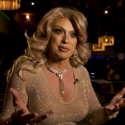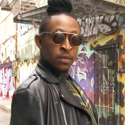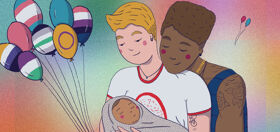![By AnemoneProjectors (Radical Faeries Uploaded by MaybeMaybeMaybe) [CC BY-SA 2.0 (http://creativecommons.org/licenses/by-sa/2.0)], via Wikimedia Commons](https://www.queerty.com/content/docs-null/2016/11/800px-Radical_Faeries_4763719016-670x503.jpg)
What could possibly be more radical than a faerie? Especially when that faerie is part of a worldwide movement to elevate queer consciousness and liberation through spiritual exploration that was the whole message of the city’s Summer of Love. Dating back decades, San Francisco has played home base to a life-changing movement known as the Radical Faeries, a loosely-organized group of free spirits who prize creativity, freedom and spirituality.
Like the Sisters of Perpetual Indulgence, the Faeries emphasize community: they socialize, they date, they engage in charity for the neighbors around them. Over the years, they’ve had a huge impact on San Francisco’s philosophy of sexual liberation, but also on the city’s social scene. The Faeries are for everyone — young, old, outcasts, drag, femme, nudists, non conformists, regular guys and the rest of us.
1. Faery Circles of the Haight

The movement traces its roots back to early adherents were activists such Harry Hay and Mitch Walker, who set out to provide gay men with an alternative to what they saw as mainstream gay culture: discos, pop culture, capitalism, consumerism and assimilation. Activist Arthur Evans established Faery Circles in his Haight Street apartment, offering a social gathering where gay men could celebrate Greek and Pagan rituals.
How about we take this to the next level?
Our newsletter is like a refreshing cocktail (or mocktail) of LGBTQ+ entertainment and pop culture, served up with a side of eye-candy.
2. The first spiritual conference

Harry Hay, a socialist who had previously helped run the Gay Liberation Front, joined with UCLA student Mitch Walker, who was working on a sex guide for gay men.
Together with other activists, these organizers put together an initial gathering that they called the Spiritual Conference for Radical Faeries, located in Arizona in late 1979. There was considerable resistance to calling their work a “movement,” since they wanted more a decentralized way of life; and that approach seemed to resonate. Despite the remote location, over 200 men showed up for the retreat, and heard speeches about resisting the urge to assimilate with non-gay people. Programs included practical skills such as massage and nutrition, and imaginary beliefs like healing energy, ideas that soon would catch hold in mainstream culture as well. There was also a workshop on English country dancing and sex.
3. San Francisco’s Faerie chapter

That successful initial gathering allowed the loosely defined group to create chapters around the country. Though many of the organizers lived in Las Angeles, including Hay, another group formed the San Francisco Faerie Circle. They formed a nonprofit called NOMENUS and established a gathering place in what was then a more Napa before it established itself as a wine destination. Later they acquired a farm in Oregon to continue the spread of the movement. There are now official gatherings across the United States, Canada, Australia, the UK, Italy and France.
4. Inspiring the Sisters of Perpetual Indulgence

Many of the participants in that early gathering returned to San Francisco eager to disrupt the dominant culture and assert queer power. The result: a new group known as Sisters of Perpetual Indulgence. Now a worldwide phenomenon, at the time the Sisters were an unusual group of men in nun outfits and makeup. But they took the values of the Faeries (self-expression, empowerment, spirituality) and translated them into radical queer performance.
They started simple: a fundraiser, a bingo night, and a Salsa dance. Many in the Castro, which at the time was still a white working class enclave, were mystified. But San Francisco on the way to becoming the tolerant city it is today, the Sisters soon proved that they were an invaluable part of the community with charitable work and community support.
5. A Home for the Sex-Positive in the Mission
![By Mark Allyn (Mark Allyn) [Public domain], via Wikimedia Commons](https://www.queerty.com/content/docs-null/2016/11/Radfae2-670x447.jpg)
The 14th Street Faery House is a colorful ode to love, and a place to gather and build community during the worst days of the HIV epidemic. It remains a refuge, providing housing to disadvantaged San Franciscans in the vibrant but expensive ‘hood.
The house is a safe place for rejecting the trappings of heterosexuality. The group is therefore sometimes regarded as outcasts even among other LGBTQ. “Because of its indigenous, gay-centered nature, the Radical Faerie movement pioneers a new seriousness about gayness, its depth and potential, thereby heralding a new stage in the meaning of Gay Liberation,” Mitch Walker has written, reflecting on nearly two decades of the movement.
6. Faetopia parties
![By Crunch42 (Own work) [CC BY-SA 4.0 (http://creativecommons.org/licenses/by-sa/4.0)], via Wikimedia Commons](https://www.queerty.com/content/docs-null/2016/11/The_Mayday_Kiss-670x503.jpg)
The San Francisco group emphasizes DIY events, sex parties as fundraisers, and creative support for other members. Those projects include Faetopia, a 2012 screening series, and the Faerie Freedom Village, a massive annual gathering.
In San Francisco, the faeries tend to cluster near the Mission, where the nicknamed Feyboy Mansion is located. Their look tends to be flamboyant, a bit closer to Burning Man-style than other chapters might be. And questioning gender is to be expected.
These days, Faetopia remains an active online and offline community, with queer touch festivals, forestry events, and a “new queers ball.”
7. Faerie Freedom Village
Last year in San Francisco, the faeries created a “Faerie Freedom Village” during Pride in the heart of United Nations Plaza, adjacent to the main Pride rally. Decorated like an elaborate Burning Man camp, it was a commercial-free island of spiritual pleasure where the economy is based purely on gifts.
“We pulled ugly green frog skin of heterosexual conformity over us, and that’s how we got through school with a full set of teeth,” Harry Hay once said. “We know how to live through their eyes. We can always play their games, but are we denying ourselves by doing this? If you’re going to carry the skin of conformity over you, you are going to suppress the beautiful prince or princess within you.”
8. Urban Ecology

Many radical faerie settlements are far from cities, hidden away in forests or farms. They are anti-materialist, spiritual and devoted to justice. But those who live in urban settings are able to transform their dwellings to something more natural, with pocket gardens, green living roofs, and even chicken coops.
9. Stronger Together
![photo by Alan Light [CC BY 2.0 (http://creativecommons.org/licenses/by/2.0)], via Wikimedia Commons](https://www.queerty.com/content/docs-null/2016/11/800px-Harry_Hay_1929106169-670x446.jpg)
In 2014, a member of San Francisco’s radical faerie community was beaten to death. Blindsided by the tragedy, his friends and chosen family sprung into action to support each other: a circle of prayer, silence, flowers and incense brought the community together to heal in Dolores Park. At the same time, faeries in Michigan, where the victim grew up, held a sister-vigil in his memory. It is at times of greatest tragedy that the strength of the Radical Faerie community is revealed.
10. Xrysalis Retreat

There’s seemingly no end to the events and parties and prayers and classes offered by Faeries around the Bay, but one of the most memorable might be Xrysalis, a retreat for queer people of color in Mendocino County, 100 miles north. Harkening back to the early faerie gatherings, the event invites participants to get naked dive into mud and clay, and cover their bodies in nature. Participants return to the city feeling affirmed, fulfilled and connected to nature.


















